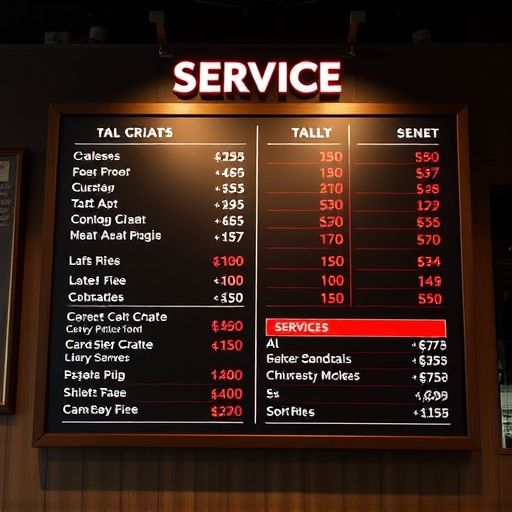In urban areas with heavy traffic congestion, Cold Air Intake (CAI) systems offer a powerful solution to boost fuel efficiency. By drawing in cooler, denser air from outside the engine bay, CAIs significantly improve Miles Per Gallon (MPG), reduce fuel consumption and emissions. This not only saves drivers money but also has a positive economic impact by increasing disposable income and reinvestment in local businesses. As more individuals adopt CAI installations, this cycle of financial and environmental benefits can strengthen urban economies while promoting a greener environment through optimized vehicle performance and reduced emissions.
Cities are global engines of economic growth, but their bustling nature often comes at a cost. This article explores how automotive innovations like Cold Air Intake (CAI) systems play a pivotal role in unlocking efficiency and boosting urban economies. We delve into the tangible benefits of CAI-driven MPG improvements for city drivers, including reduced costs and enhanced sustainability. Furthermore, we navigate towards a greener cityscape, examining the broader economic implications of improving fuel economy through eco-friendly transportation initiatives.
- How Cold Air Intake Systems Boost City Economy: Unlocking Efficiency
- – Exploring the role of cold air intake in urban vehicle performance
- – MPG improvements and its economic impact on cities
How Cold Air Intake Systems Boost City Economy: Unlocking Efficiency

In urban areas, where traffic congestion is a common challenge, Cold Air Intake (CAI) systems play a surprising yet significant role in boosting the local economy. These relatively simple modifications to vehicles have been shown to deliver substantial improvements in fuel efficiency, translating to cost savings for drivers and enhanced environmental sustainability. By drawing in cooler, denser air from outside the engine bay, CAIs optimize the combustion process, leading to increased horsepower and torques, while also improving Miles Per Gallon (MPG). This results in reduced fuel consumption and lower emissions, making them a smart choice for city dwellers looking to save money at the pump.
Moreover, the economic ripple effect of these improvements is notable. With better fuel economy, drivers spend less on gas, freeing up disposable income that can be reinvested in local businesses. This influx of spending power supports various sectors, from retailers and restaurants to services and entertainment, thereby strengthening the city’s overall economic fabric. As more individuals opt for CAI installations, this positive cycle has the potential to expand, fostering a healthier urban economy and promoting a greener environment.
– Exploring the role of cold air intake in urban vehicle performance

In urban settings, where stop-and-go traffic is common and shorter distances are typically traveled, optimizing vehicle performance becomes a key strategy for maximizing fuel efficiency. One often overlooked component that can significantly contribute to MPG improvements in city driving is the cold air intake system. By allowing cooler air to enter the engine, these systems enhance combustion, leading to more efficient burning of fuel. Cooler air is denser, containing more oxygen molecules per volume, which directly improves engine performance and reduces wastage. This simple modification can result in notable MPG gains without compromising power, making it an attractive option for urban drivers looking to save on fuel costs.
Additionally, the efficiency boost provided by cold air intakes helps reduce emissions, contributing to a cleaner urban environment. With city driving’s unique challenges, such as frequent idling and rapid acceleration, any enhancement in engine performance can make a substantial difference. This is especially true for vehicles with older or less efficient engines, where even small improvements can translate into significant long-term savings and environmental benefits.
– MPG improvements and its economic impact on cities

MPG improvements, driven by advancements in technology and design, play a pivotal role in enhancing the economic health of cities. One notable aspect is the integration of cold air intake systems in vehicles, which significantly contributes to better fuel efficiency. This simple modification allows for more optimal air-fuel mixture, resulting in increased mileage per gallon (MPG). As city populations continue to grow and vehicle ownership remains high, even modest MPG improvements can translate into substantial economic benefits. Less fuel consumption means lower operating costs for commuters, businesses, and public transportation systems, all of which are key contributors to a thriving urban economy.
Moreover, improved MPG has positive ripple effects throughout the city’s infrastructure. Reduced fuel expenses lead to more disposable income in residents’ pockets, fostering local spending and strengthening various sectors from retail to services. Additionally, lower emissions from vehicles with better MPG contribute to cleaner air and reduced maintenance costs for city-owned infrastructure, creating a sustainable and cost-effective urban environment.
Cities across the globe are embracing the power of efficient vehicle systems, and cold air intake (CAI) technology is at the forefront of this revolution. By enhancing engine performance and improving fuel efficiency through MPG gains, CAI systems contribute significantly to urban economies. Reduced fuel consumption means lower operating costs for city fleets and private vehicles, stimulating local businesses and promoting a more sustainable urban environment. This simple yet effective modification underscores the potential for cities to thrive economically while mitigating their ecological footprint.














